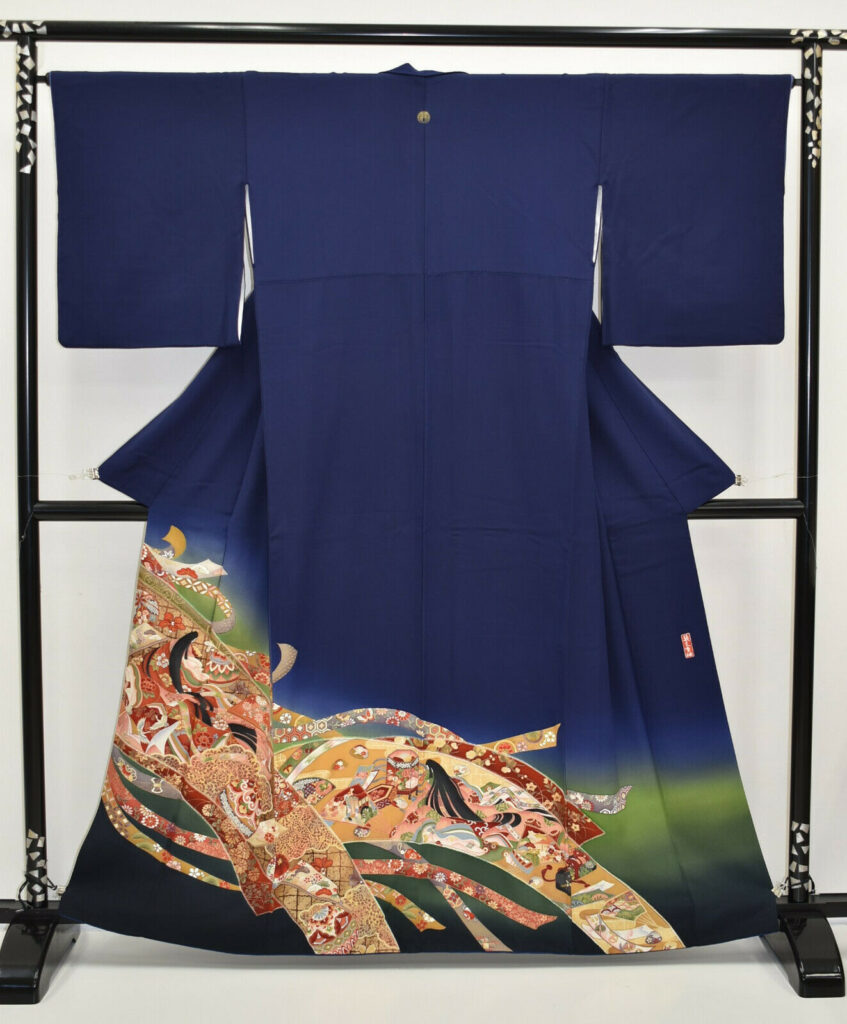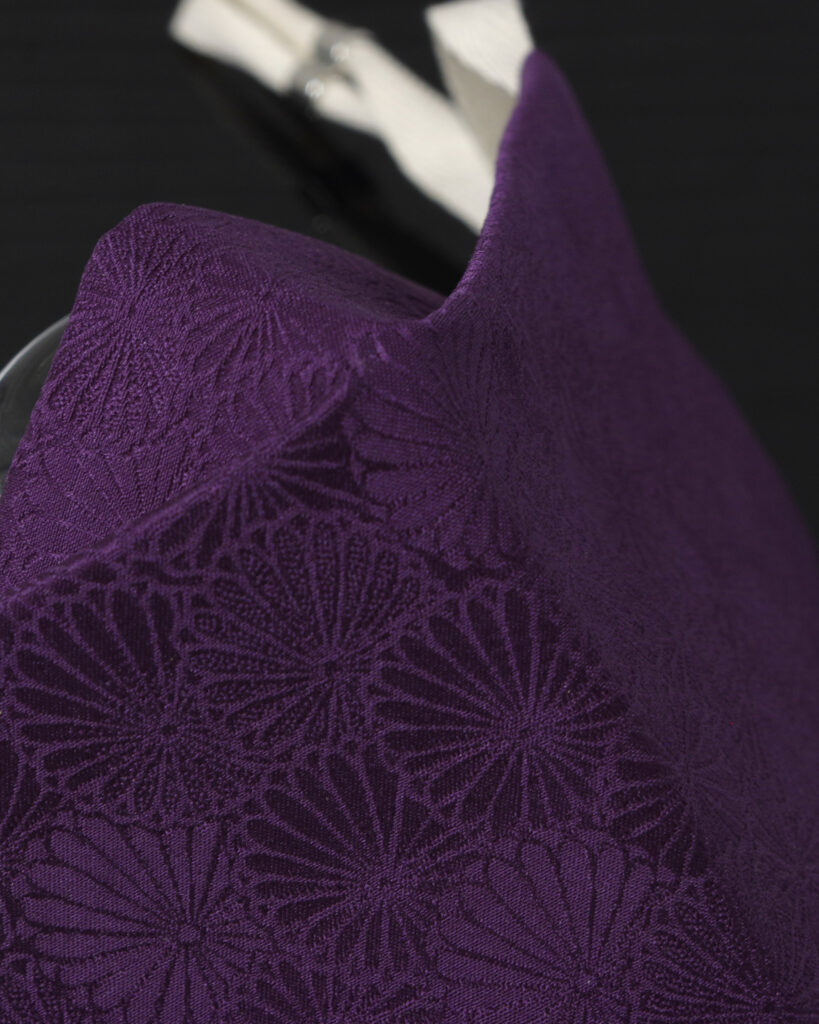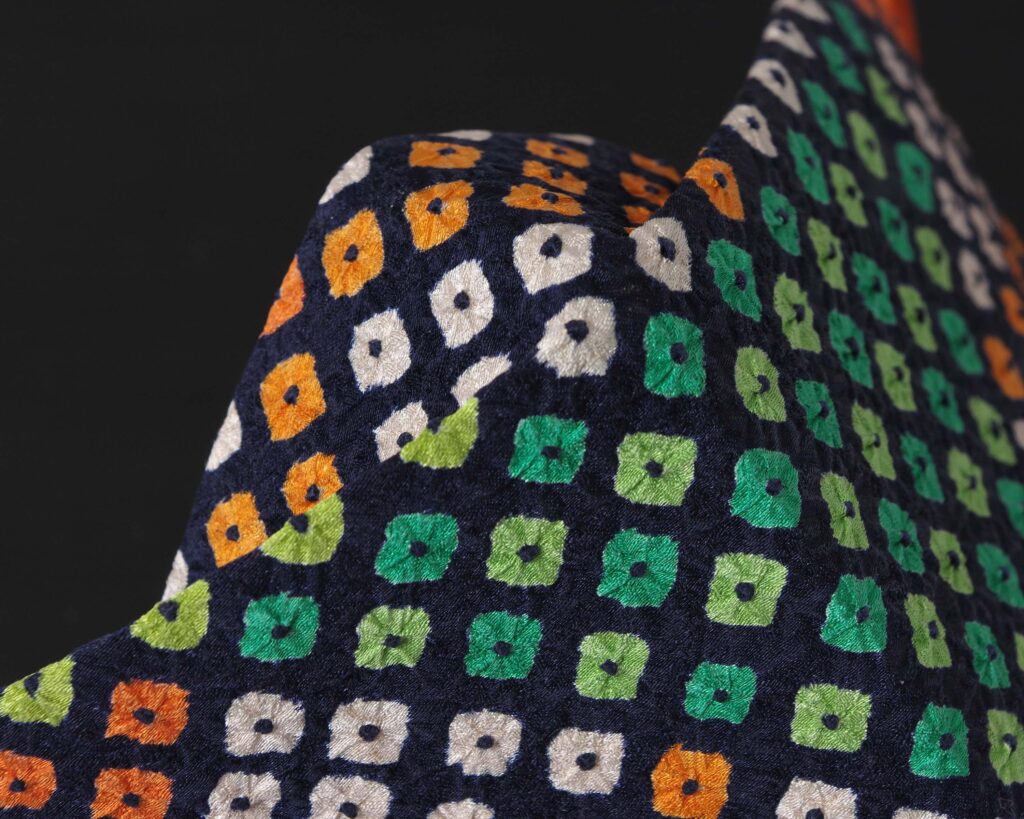Japanese craftsmen seem to have a beautiful relationship with the past, with their materials and with their processes. I think it’s about respect. Things that are made today honour things that were made before by building upon them rather than copying them. Processes and skills are repeated but allowed to evolve. Materials are given a voice. Within this thoughtful attitude we find kimono.

Kimono are curious things. They are one of the few objects where development has stopped. All fundamentally follow one of a few patterns and the basic form appears to have reached a zenith. One bolt of fabric, 32cm or so wide, is carefully cut and sewn together to form the classic shape. There are no offcuts and the kimono can be taken apart and re-assembled to form the original bolt of fabric again – this happens anytime the kimono is taken to a specialist cleaner. To me this embodies that respectful attitude – the tailor knows how much time has gone into every square inch of silk and throws none of it away.

These restrictions of technique, form and history appear to unleash an incredible spirit within the textile makers. Their dreams are wilder than mine and they find ways to render them in silk, yet they are also satisfied with keeping traditional forms alive. One of the most astonishing techniques they use is shibori.

Shibori is tie-dying but it is unrecognisable from what we know in the West. The scale is tiny but the required ambition, skill and time are huge. The most familiar style is the kanoko dot. The pale area is where there was a knot protecting the fabric from dye. A kimono would require many thousands of knots, each in a precise location. If the work is fine enough, the design complex enough and the worker shuns the few available modernisations, it can take anything up to 4 years to dye enough fabric to make a kimono. The appearance is so prized and so expensive that printed fabrics often replicate the pattern.